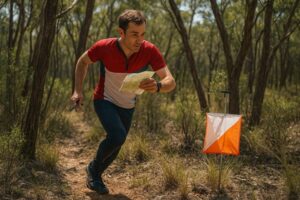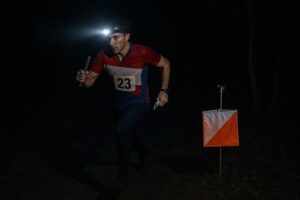Discover the Thrills of Foot Orienteering

Foot orienteering combines navigational skills and physical endurance as participants traverse challenging terrain using nothing but a map and compass. This sport is popular among adventurers and outdoor enthusiasts, offering excitement, exercise, and mental stimulation.
A Brief History of Orienteering
Originating in late 19th-century Sweden, orienteering started as a military training exercise. Over time, it evolved into a competitive sport, with the first public competition held in Norway in 1897. The International Orienteering Federation (IOF) was founded in 1961 to standardise global rules and promote the sport. Today, orienteering events occur worldwide, attracting participants of all ages and skill levels.
The Basics of Foot Orienteering
In foot orienteering, participants navigate a course using a map and compass. The map, specially designed for orienteering, highlights various features such as hills, valleys, vegetation, and water bodies. The compass, essential for accurate navigation, ensures participants stay on course.
The course consists of checkpoints called controls, which participants must visit in a specific order. The challenge lies in choosing the optimal route between controls, balancing speed and accuracy. Orienteering events vary in length and difficulty, catering to beginners and seasoned competitors.
Essential Skills for Foot Orienteering
-
-
- Map Reading: Understanding map symbols and terrain features is crucial for successful navigation. Practice interpreting contour lines, colours, and symbols to develop this skill.
- Compass Use: Learn to take accurate bearings and align the map with the terrain. This ensures you maintain the correct direction throughout the course.
- Route Choice: Evaluate different route options based on your physical abilities and terrain conditions. The fastest route may not always be the shortest, so consider factors such as elevation gain and vegetation density.
- Pacing and Timing: Develop a consistent pace and practice estimating distances. This helps you gauge your progress and adjust as needed.
-
Benefits of Foot Orienteering
Foot orienteering offers numerous physical and mental benefits:
-
-
- Improved Fitness: Navigating diverse terrain provides a full-body workout, enhancing cardiovascular health, strength, and endurance.
- Mental Stimulation: Orienteering challenges your problem-solving and decision-making skills, keeping your mind sharp.
- Stress Relief: Immersing yourself in nature promotes relaxation and reduces stress levels.
- Social Interaction: Orienteering events foster camaraderie and teamwork, connecting you with like-minded individuals.
-
Getting Started with Foot Orienteering
If you’re new to orienteering, follow these steps to get started:
-
-
- Find a Local Club: Join an orienteering club to access training resources, events, and experienced mentors.
- Learn the Basics: Attend introductory courses or workshops to develop essential skills. Many clubs offer beginner-friendly events to help you gain confidence.
- Get the Right Gear: Invest in a good-quality compass, comfortable running shoes, and weather-appropriate clothing. A waterproof map case can also be helpful.
- Practice Regularly: Consistent practice helps you refine your skills and build endurance. Explore local parks or nature reserves to familiarise yourself with different terrain types.
-
Types of Orienteering Events
Orienteering events come in various formats, each offering unique challenges:
-
-
- Sprint Orienteering: Short, fast-paced courses typically set in urban environments or parks. Ideal for beginners and those seeking a quick workout.
- Middle Distance Orienteering: Courses of moderate length, emphasising technical navigation and route choice.
- Long Distance Orienteering: Challenging courses requiring endurance and strategic planning. Suitable for experienced participants.
- Night Orienteering: Courses set in the dark, adding an extra layer of difficulty. Participants must rely on their navigation skills and a headlamp.
- Relay Orienteering: Team-based events where participants complete individual legs of the course. Promotes teamwork and strategy.
-
Tips for Success in Foot Orienteering
To excel in foot orienteering, consider these tips:
-
-
- Plan Ahead: Study the map and plan your route before starting. Identify key landmarks and potential obstacles.
- Stay Focused: Maintain concentration throughout the course, regularly checking your map and compass.
- Adapt to Conditions: Be prepared to adjust your route based on terrain and weather conditions. Flexibility is key to success.
- Practice Patience: Orienteering requires patience and persistence. Don’t get discouraged by setbacks—learn from your mistakes and keep improving.
-
Conclusion to Foot Orienteering

Foot orienteering is a captivating sport that combines physical endurance, mental agility, and a love for the outdoors. With its rich history, diverse event formats, and numerous benefits, it offers something for everyone.
Whether you’re a seasoned adventurer or a complete beginner, foot orienteering provides an opportunity to challenge yourself, connect with nature, and enjoy the thrill of navigation. So, grab a map and compass, and embark on your orienteering journey today. Happy navigating!
